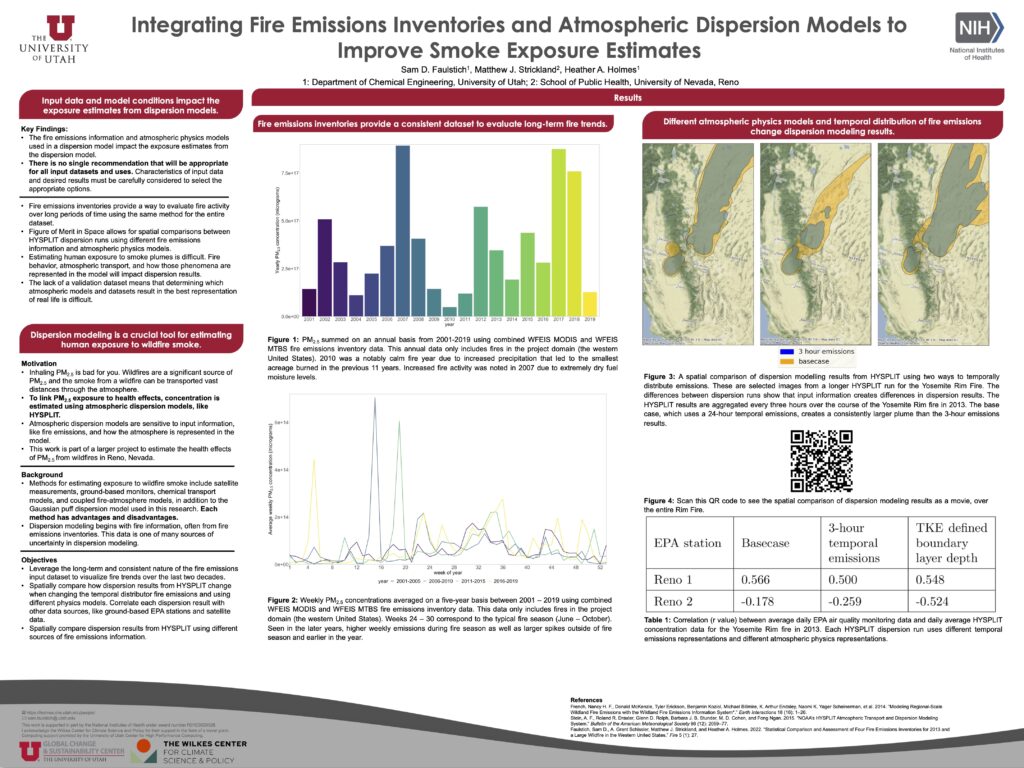Integrating Fire Emissions Inventories and Atmospheric Dispersion Models to Improve Smoke Exposure Estimates
Bio
Sam Faulstich (they/them) is a chemical engineering Ph.D. candidate. They have bachelor’s degrees in physics and atmospheric science and a master’s degree in atmospheric science from the University of Nevada, Reno. Their research focuses on modeling particle transport through the atmosphere to estimate human exposure to wildfire smoke. During this atmospheric modeling work, Sam has used Bayesian statistics to analyze information on fire emissions and evaluated physics inputs for atmospheric modeling uses. In their free time, Sam enjoys gluten-free baking and crossword puzzles.
Abstract
Inhaling wildfire smoke poses health risks to humans close to the fire and those impacted by atmospheric transport of wildfire smoke plumes. Dispersion modeling allows for estimating smoke plume impact on urban air quality. The HYSPLIT (Hybrid Single-Particle Lagrangian Transport) model is a dispersion model that includes various physics and emissions options. Pollution dispersion estimates from HYSPLIT are sensitive to input data and model setup conditions. We compare HYSPLIT dispersion estimates using different input data and model variables, like turbulence parameters, plume rise, and emissions releases.
Narrative
Inhaling wildfire smoke causes unfavorable health effects. A dispersion model is used to learn more about these impacts in urban areas. All models are sensitive to initial conditions, meaning different data sources and model settings create different model results. This work presents an analysis of differing dispersion results using various initial conditions.

